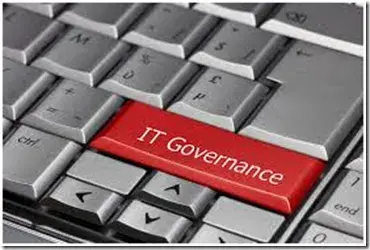I take it that you are in software delivery – developing software products and delivering services to customers. You may have had only a limited view of IT Governance only to the extent that it impacted your own work. For example, you may have experienced some (or all!) of the following:
· You urgently need a workstation with more muscle due to specific project requirements but it is getting delayed awaiting approval as an “exception” since it is much more than the “standard” workstation configuration in the organization
· You need a new software tool and your manager is asking you to try and get the customer to pay for it since it has not been budgeted for in the organization/project
· Your “high speed” connection to the customer’s server is so slow that at times practically no work can be done, Your IT support folks claim that the link is not actually down and performance issues are at the customer end (and expect you to help get it resolved)
· Day-to-day routine IT support is not recognizing the criticality of your project and not up to speed
· You are told that company security policy prohibits you from Bring Your Own Device (BYOD) and connecting to the corporate network
If you dig deeper into the above list, you would find the causes to be in some aspect of IT Governance of the organization. A common cause is inadequate collaboration between you (representing the business/line organization) and IT support. Looking the above list, some questions to ask are:
· Did the line organization provide the right inputs for the definition of a “standard” workstation in tune with expected business/technology requirements?
· Did you anticipate the need for the tool and provide inputs during budgeting (at company or project level)? Does the budget not provide for such “out of the blue” must-have items?
· Were adequate inputs and measurements requested of the IT Support function for them to plan adequate link capacity (average, peak load conditions)? Is IT Support well-connected with the customer’s IT?
· Has the line organization engaged with IT Support to help develop a service portfolio and expected service levels for various types of services?
· Have the line and IT Support organizations anticipated the need for BYOD and proactively upgraded the corporate security policy and additional controls needed?
The above may appear transactional in nature. But I feel a better appreciation of the “big picture” of IT Support & IT Governance among Project & Delivery Managers would ensure that the two functions are better aligned, thereby reducing the frictional aspect in transactions.
With that context, I would like to provide this quick overview of Governance in general and IT Governance in particular.
I came across a nice acronym for remembering the scope of Governance in general – RACE.
· Responsibility: Being held accountable for specific tasks, duties and decisions
· Authority: The power to influence behavior
· Communication: Having to keep stakeholders informed and involved
· Empowering: Providing authority to others to act
Governance is also about establishing metrics and control mechanisms enabling execution of roles & responsibilities.
All the above apply to IT Governance as well. Gartner defines IT Governance as “the processes that ensure effective and efficient use of IT in enabling an organization to achieve its goals”.
As we saw above, a fundamental goal of IT Governance is the alignment of business goals of the organization and IT initiatives. In fact, in today’s world, they become integrated and inseparable – hard to talk of a new business initiative without technology enablement.
The breadth of IT Governance can be appreciated by the following dimensions (source: www.isaca.org):
· Alignment – Provide for strategic direction of IT and the alignment of IT and the business with respect to services and projects.
· Value Delivery – Confirm that the IT/Business organization is designed to drive maximum business value from IT. Oversee the delivery of value by IT to the business, and assess ROI.
· Risk Management – Ascertain that processes are in place to ensure that risks have been adequately managed. Include assessment of the risk aspects of IT investments.
· Resource Management – Provide high-level direction for sourcing and use of IT resources. Oversee the aggregate funding of IT at enterprise level. Ensure there is an adequate IT capability and infrastructure to support current and expected future business requirements.
· Performance Measurement – Verify strategic compliance, i.e. achievement of strategic IT objectives. Review the measurement of IT performance and the contribution of IT to the business (i.e. delivery of promised business value).
There are a number of frameworks in the field of IT Governance. COBIT (Control Objectives for Information and Related Technology) is among the leaders and has evolved significantly over several.

For a quick overview of COBIT, see

I hope this short piece has evoked your interest to know more about IT Governance aspects in your own organization. Do have a chat with the person who is providing the CIO/IT Support function and his staff. They should be able to fill you in on the big picture as well as their challenges in meeting & managing your expectations in a highly dynamic world. With that improved understanding, will come improved collaboration and improved results for your projects and for the organization.
If you have comments and like to explore IT Governance more, we would love to hear from you at PM Power.
Contact us through info@pm-powerconsulting.com.





